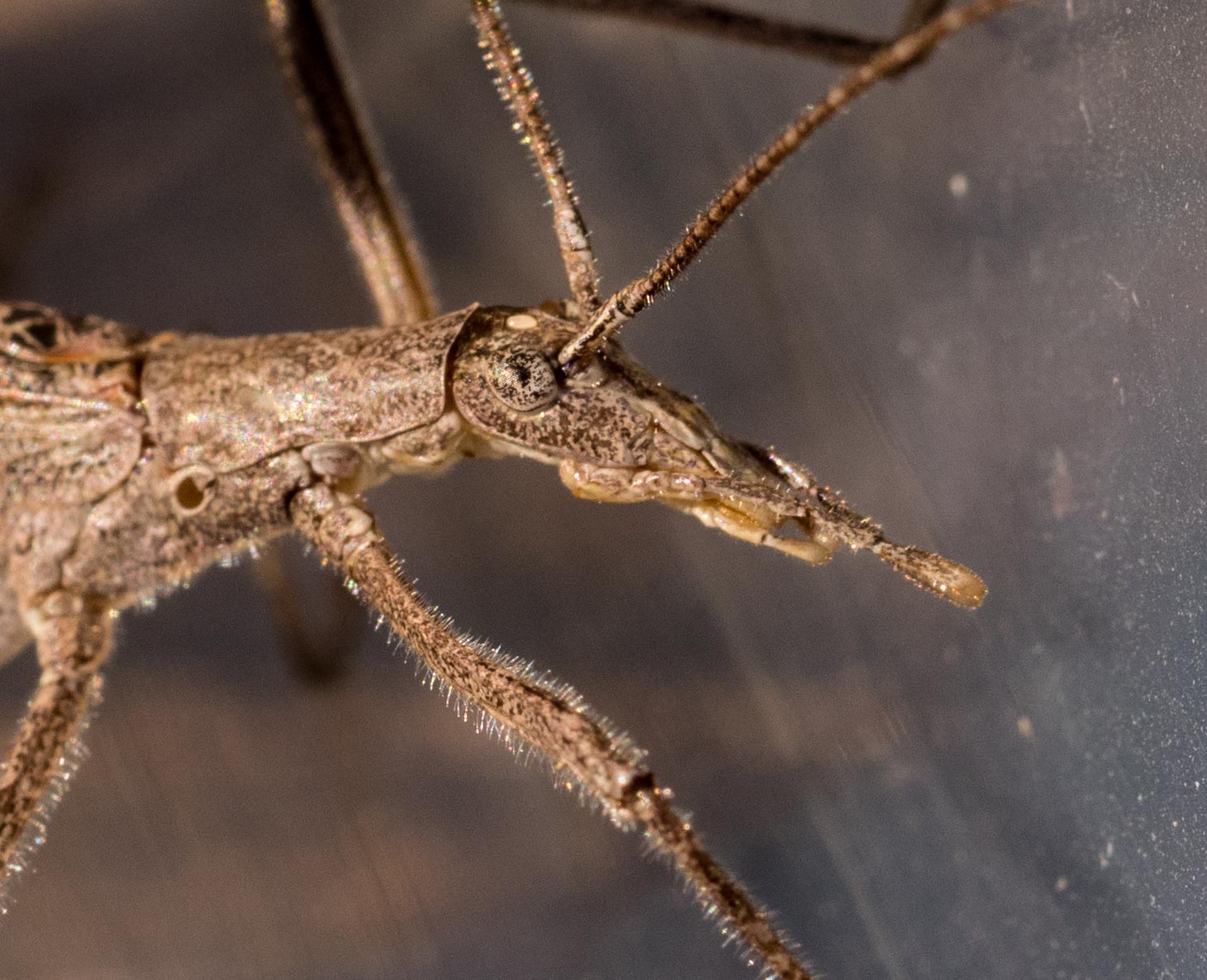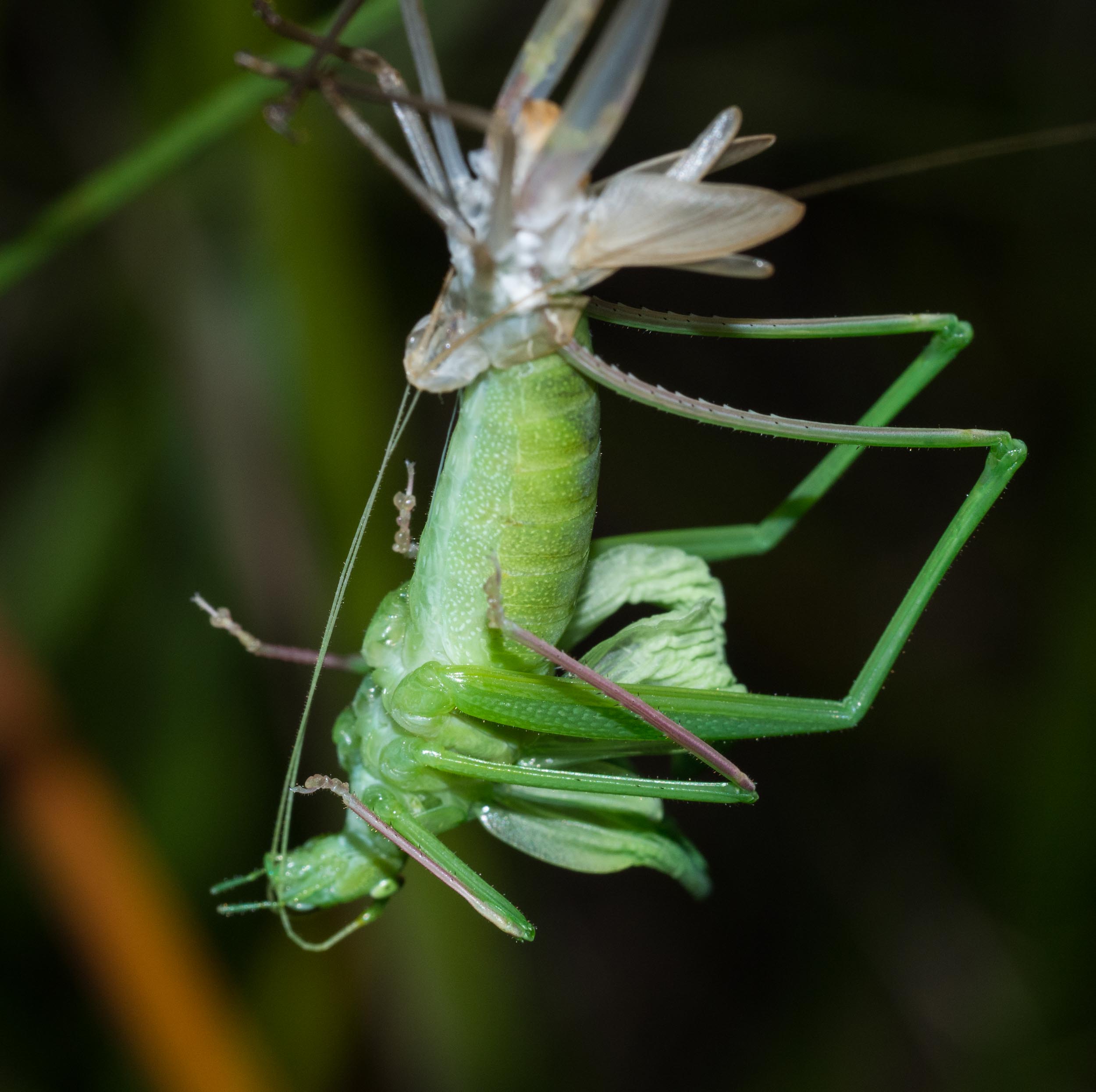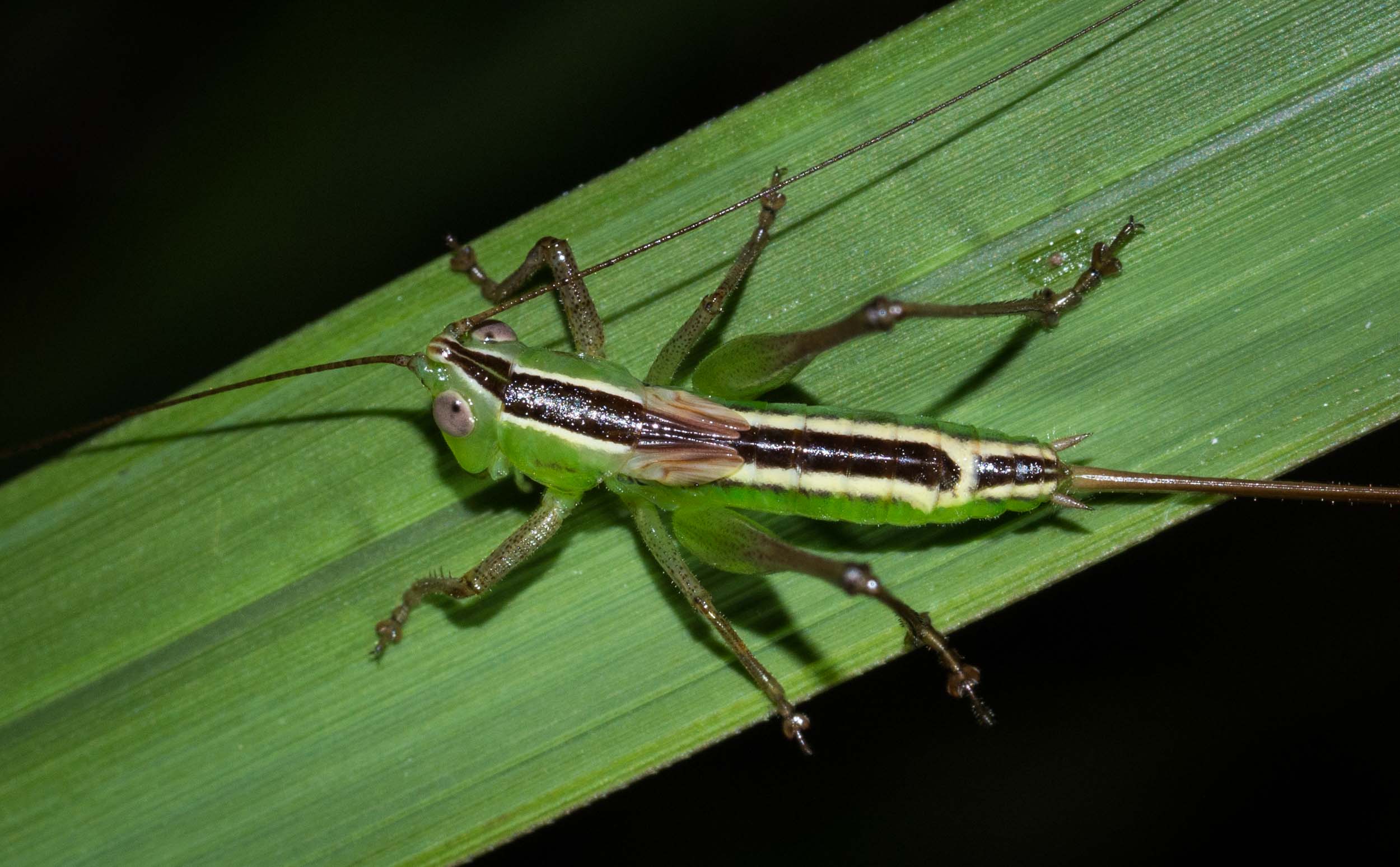The Twig-mimicking Katydid - a remarkable new orthopteran!

This time of year we frequently find an insect that we've never seen before. While it can take some time to identify it to the genus or species level, we can generally place it to the correct order (e.g. beetle, fly, bug, mantid, moth) straight away. But this newbie, which we found a few days ago, had us baffled!
It has the typical behaviour and general appearance of a stick insect. But the body proportions are more reminiscent of an orthopteran. Yet the wings are held in a really weird upright, folded position and the head and mouthparts are greatly elongated, unlike any grasshopper/cricket/ katydid I am familiar with. Using the highly formal search technique of flicking through the pages of the CSIRO book Insects of Australia, I eventually managed to chance across a drawing of the right thing.
It is in fact a katydid - family Tettigoniidae. Its scientific name is Zaprochilus australis, commonly known as the Twig-mimicking Katydid. During the day it rests motionless in its preferred vegetation, trying to look like a twig. At night it crawls slowly around the flowers of its host plant, feeding on the pollen and nectar, without damaging the petals.
This is very much the same type of behaviour as stick insects, which belong to the entirely unrelated insect order Phasmatodea - a nice example of convergent evolution. To demonstrate the point, I've included some images of a phasmid, which is sharing the terrarium in our kitchen with a bunch of caterpillars and moth pupae. These critters make excellent pets but we're trying to raise them all through to the adult stage for a serious scientific purpose - to identify the species in question.
We think the juvenile phasmid is either Ctenomorpha marginipennis, the Margined-winged Stick-insect or Podocanthus typhon, the Pink-winged Stick-insect. Time will tell...









